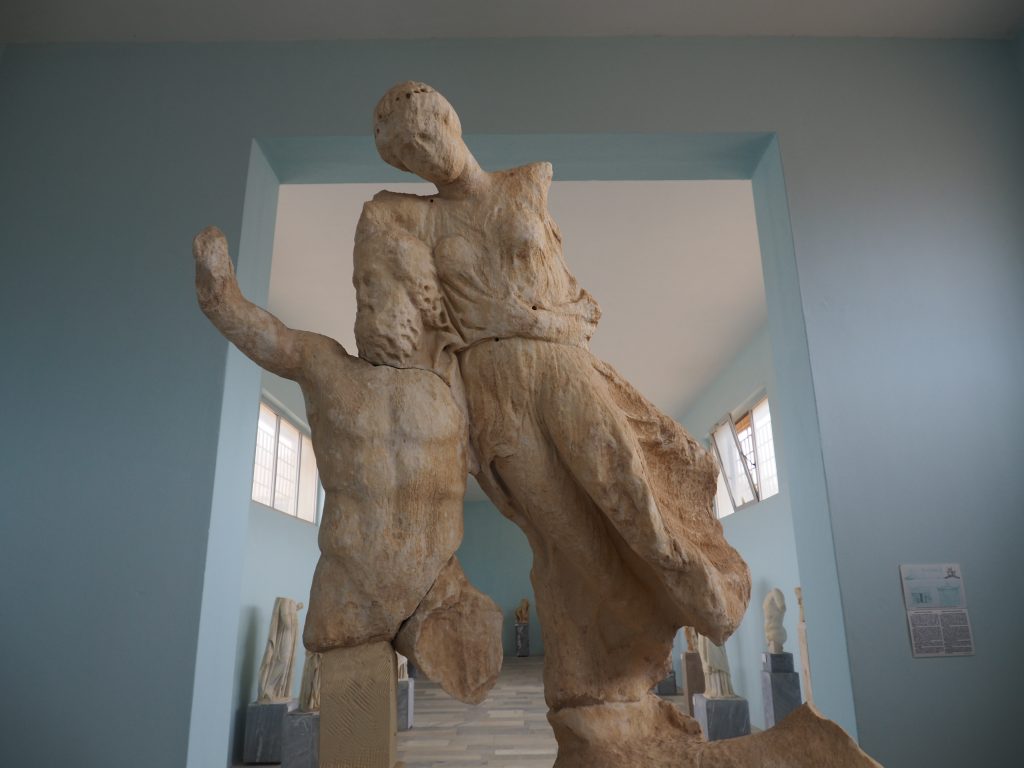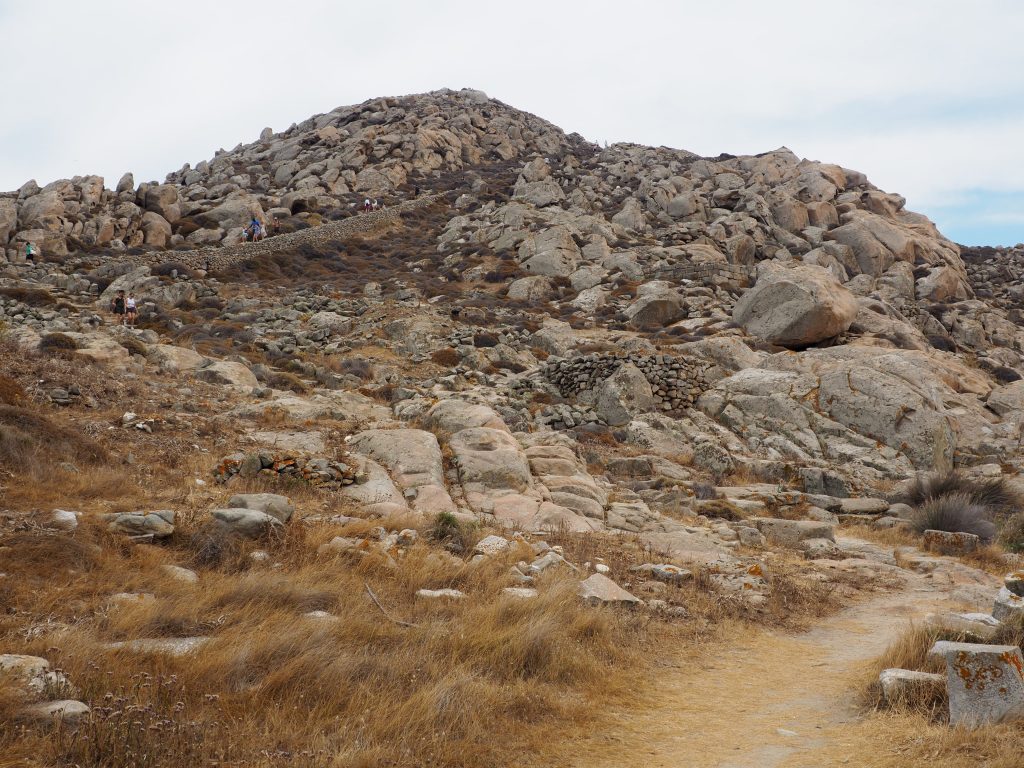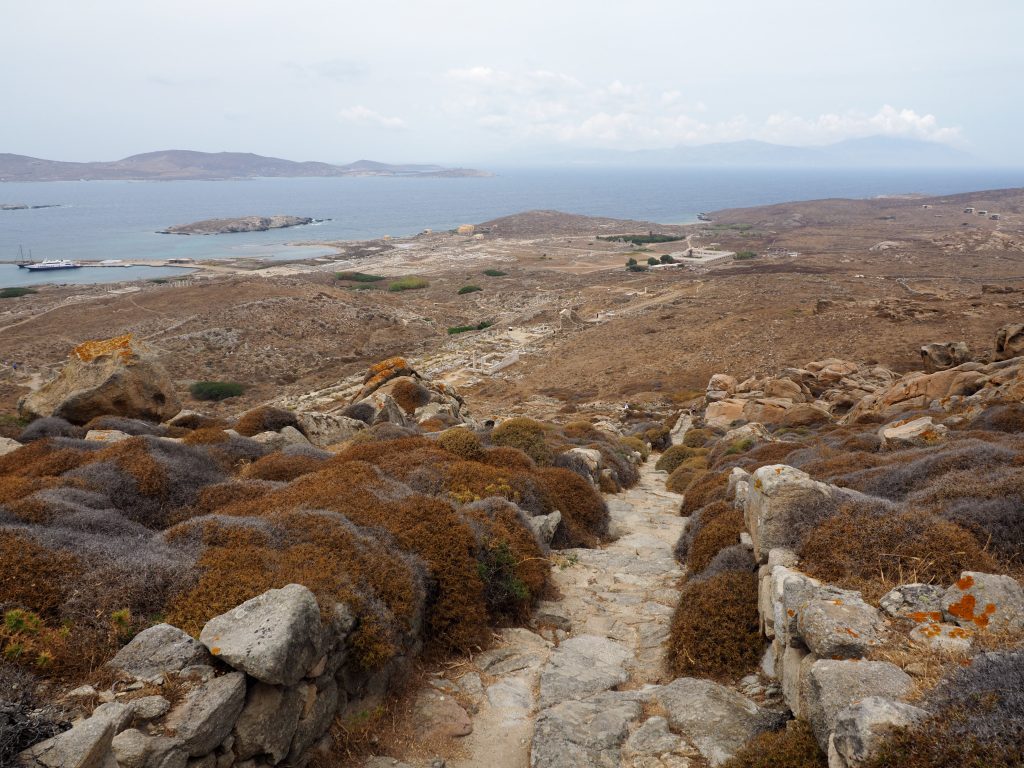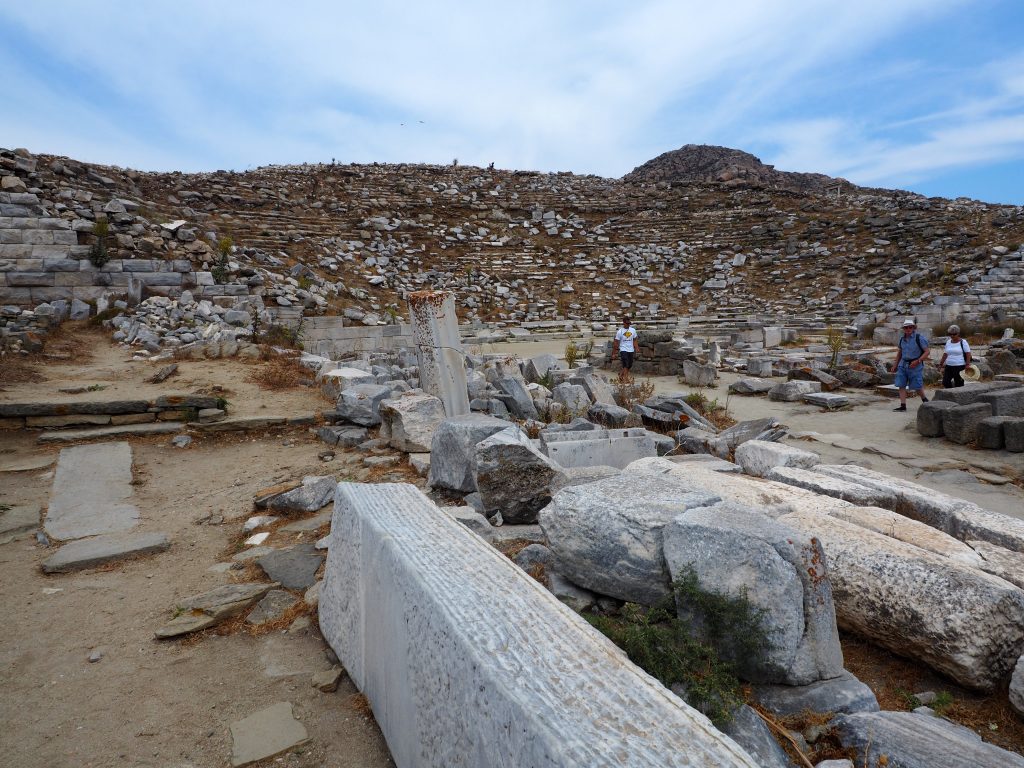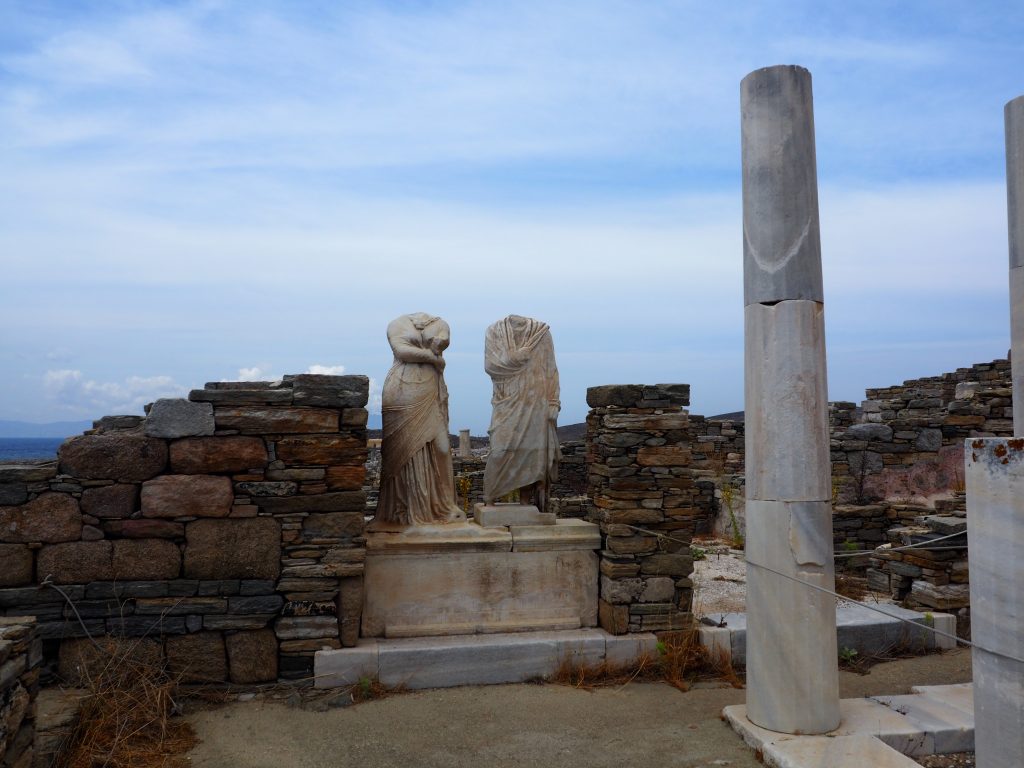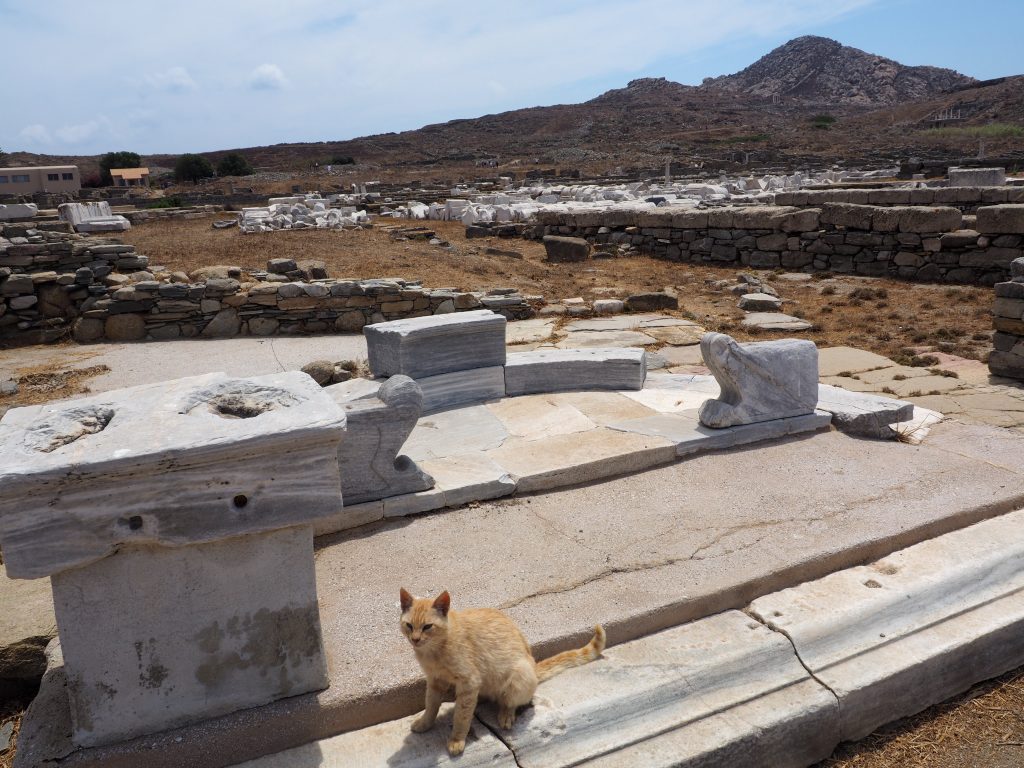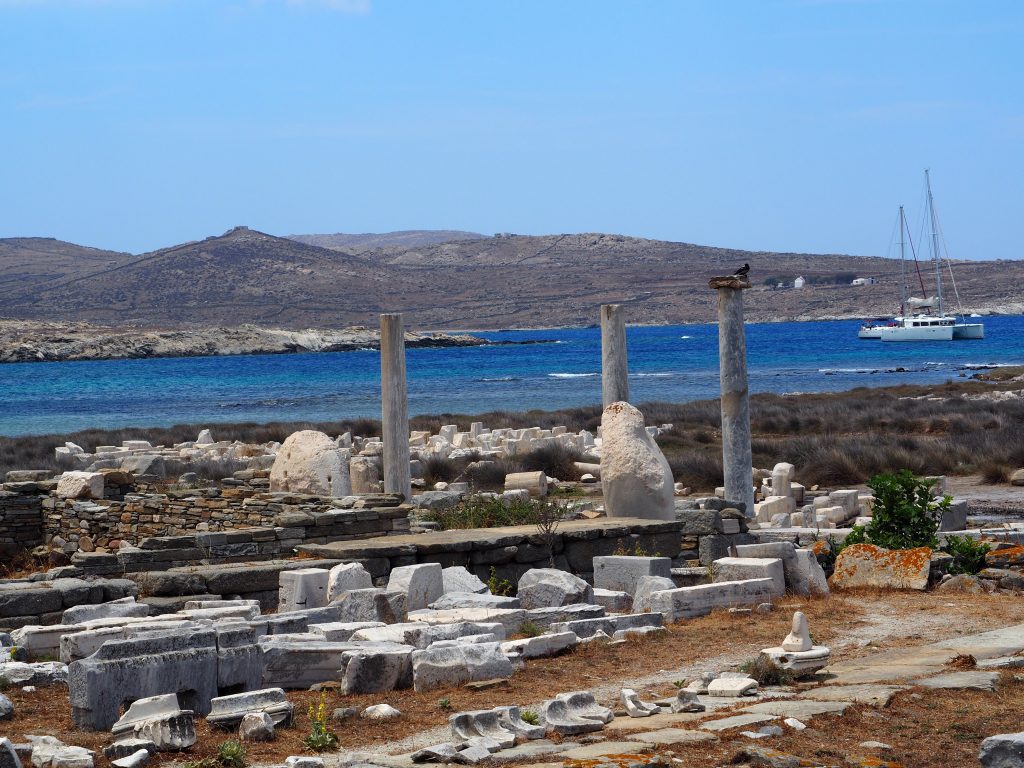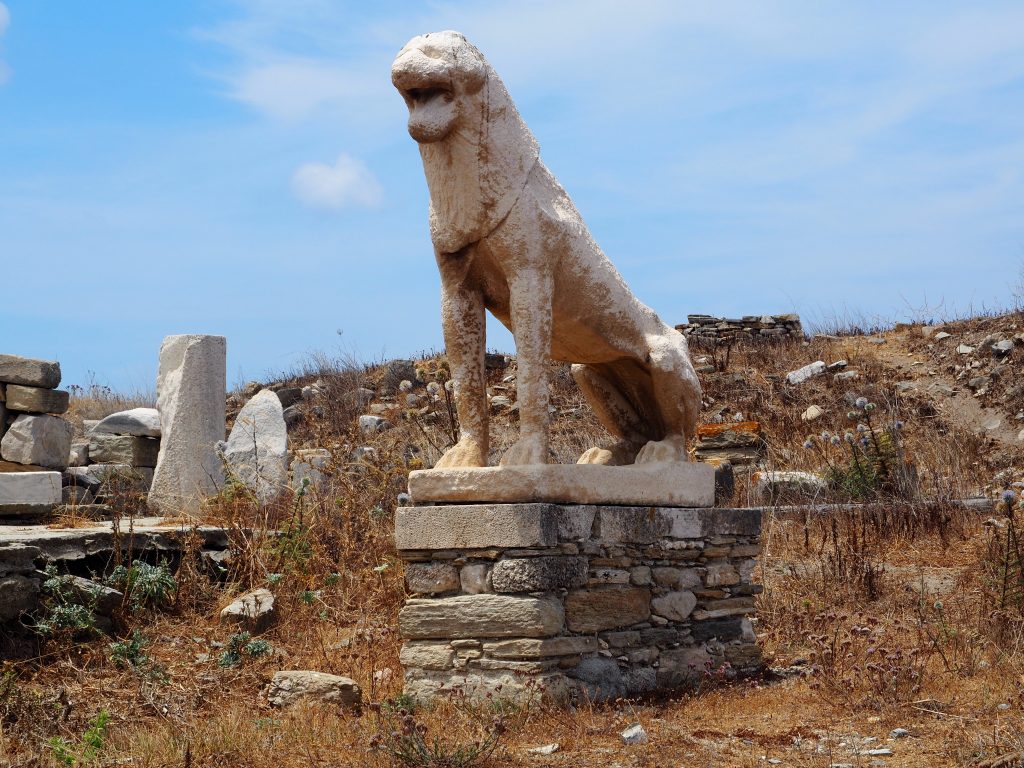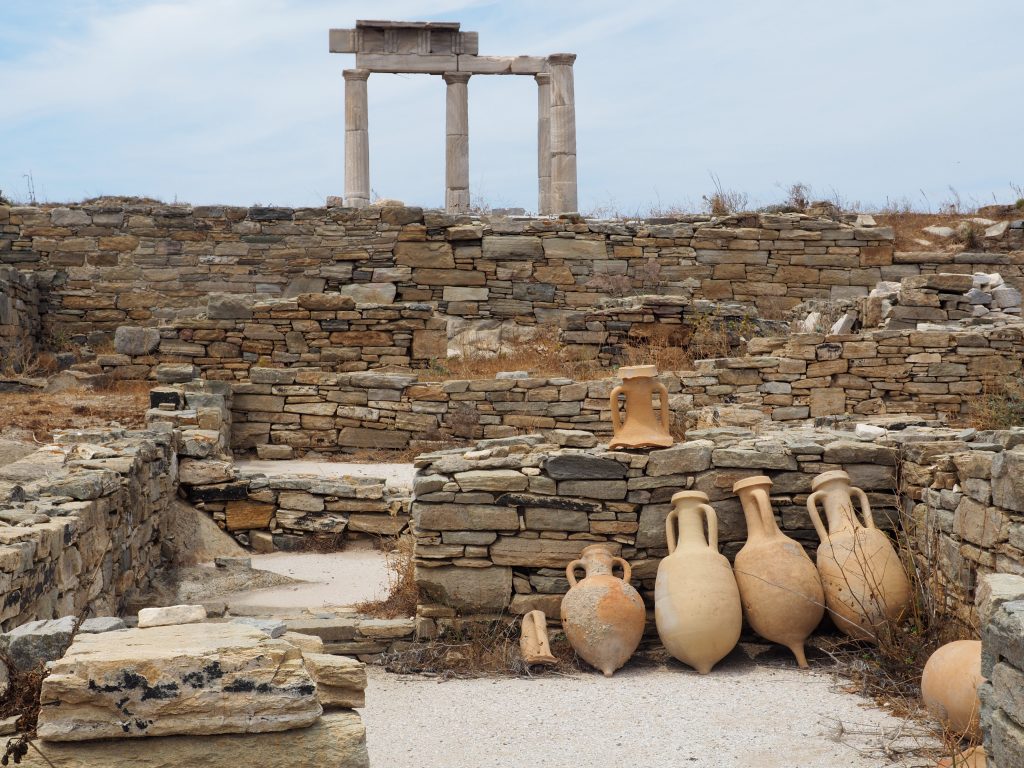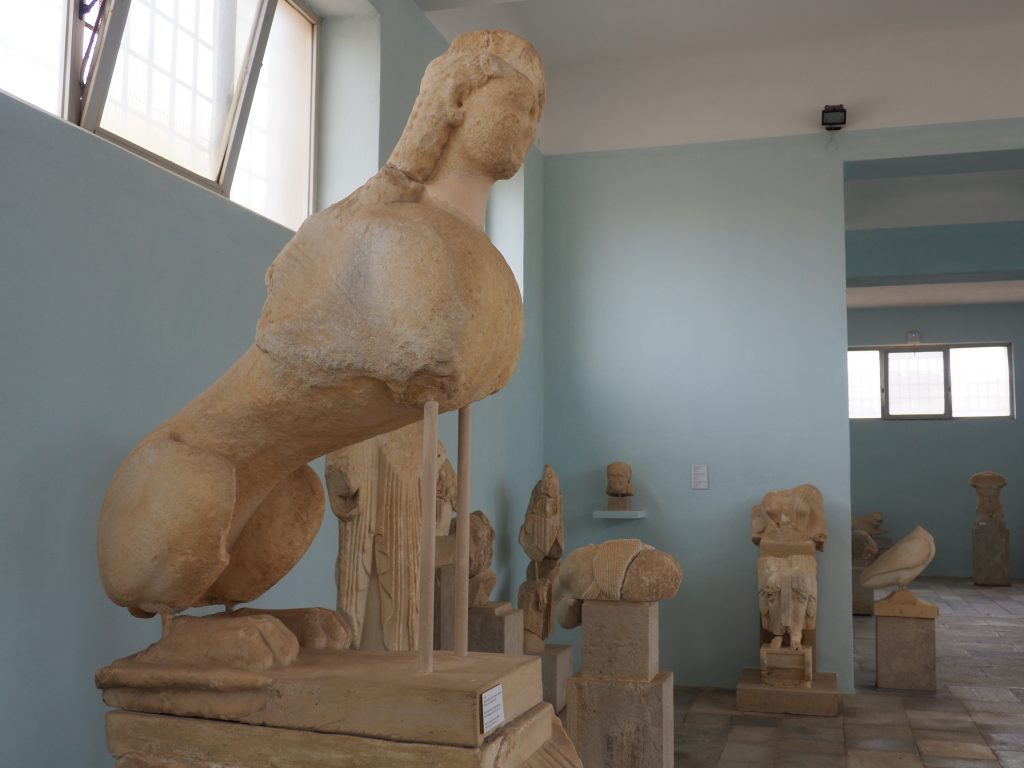Apollo and Artemis, two of the most important deities of the Greek pantheon were born here and this is the reason why this small island was the most sacred place for the ancient Greeks. Nowadays this island belongs to the most important archaeological locations in Greece. It can be said that the whole island is an open air archaeological museum.
Delos is really a small island – only 5 km long and max 1,300 m wide. But its small area of 3.4 km2 is amazing – with its landscape beauty, with its setting on the sea and with its history. Approaching it a peculiar stony mass overwhelms you, stillness and quiet. And you notice the ruins of former majestic buildings.
But let us look at the legend about the birth of Apollo and Artemis. Legends are a category of their own. As Sallustius said: ”Now these things never happened, but always are”.
Apollo and Artemis were children of the chief of the gods Zeus and a beautiful nymph Titaness Leto. Hera, the wife of Zeus, put a curse on Leto that she could not give birth on solid earth. Hera even ordered Python – a monster with serpent body and dragon head, to pursue her. Poseidon the god of the sea took pity on Leto and Leto found abode at a rocky island floating in the sea – and that was Delos. On it, in a cave at the foot of mount Kynthos next to a palm tree she gave birth to twins – Artemis and Apollo. After their birth four columns arose from the sea and the island became fixed, so that it could be visible at the same time forever – delos means visible.
There was reputedly the first Apollo oracle in a crack at mount Kynthos. When the twins were four years old, Artemis killed goats and Apollo built an altar of their horns in the oracle.
And this is the key to Delos flourishment. Around 4,500 years ago simple dwellings were built at the top of mount Kynthos, from where the inhabitants could overlook the sea to watch for enemies. Around the end of 15th century B.C. the Mycenaeans settled down by the sea. Approximately in 1000 B.C. Ionians came here and they founded the cult of Apollo in 9th century B.C. at latest and the island became an important centre of his worship. To worship Apollo as the god of light, harmony and balance and to worship his twin sister Artemis as the moon goddess, the Apollonian Sanctuary was built. From the 4th century B.C. spectacular celebrations of Apollo took place here annually, with music, dancing and athletic games. Delos became an important religious center and a place of pilgrimages.
Houses begun to spread around the sanctuary and after 167 B.C., when Delos was declared a free port, the town developed rapidly as people from all around the world were attracted by it – rich merchants, bankers, ship owners, builders, artists. Delos became “maximum emporium totius orbis terrarum” – “the greatest commercial centre of the whole world”. It was attacked and looted twice, in 88 B.C. and in 69 B.C. Delos never recovered. Pilgrims have stopped worshipping Apollo and the island gradually became an island of ruins…
The excavations started in 1872 and are continuing until today.
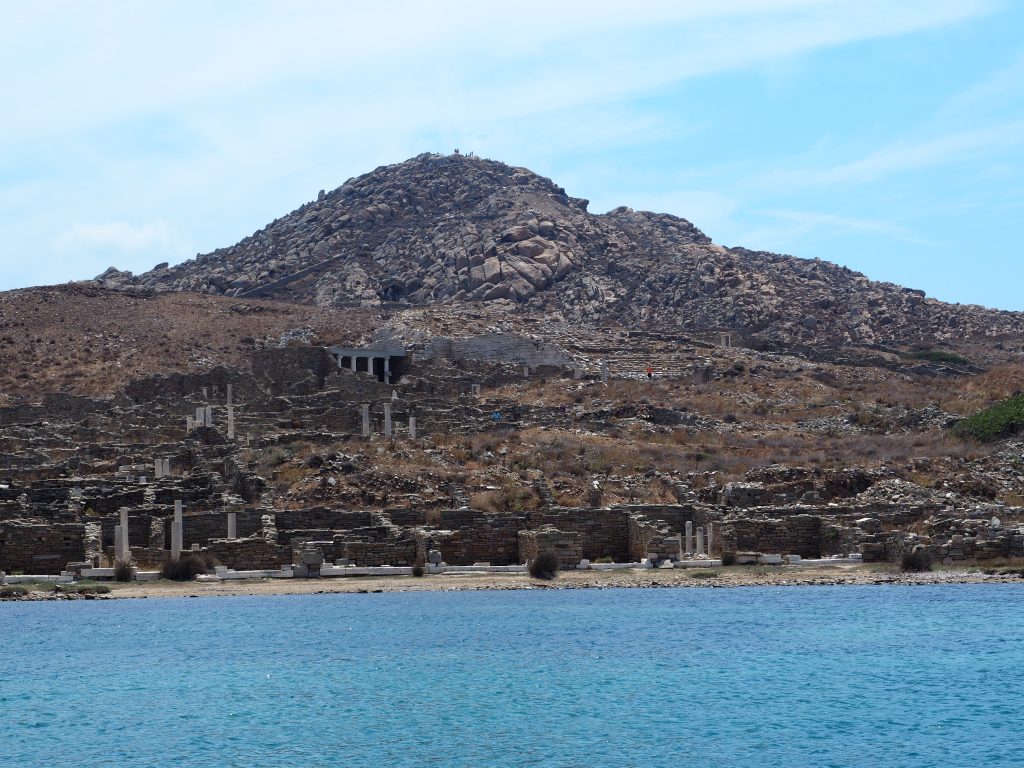
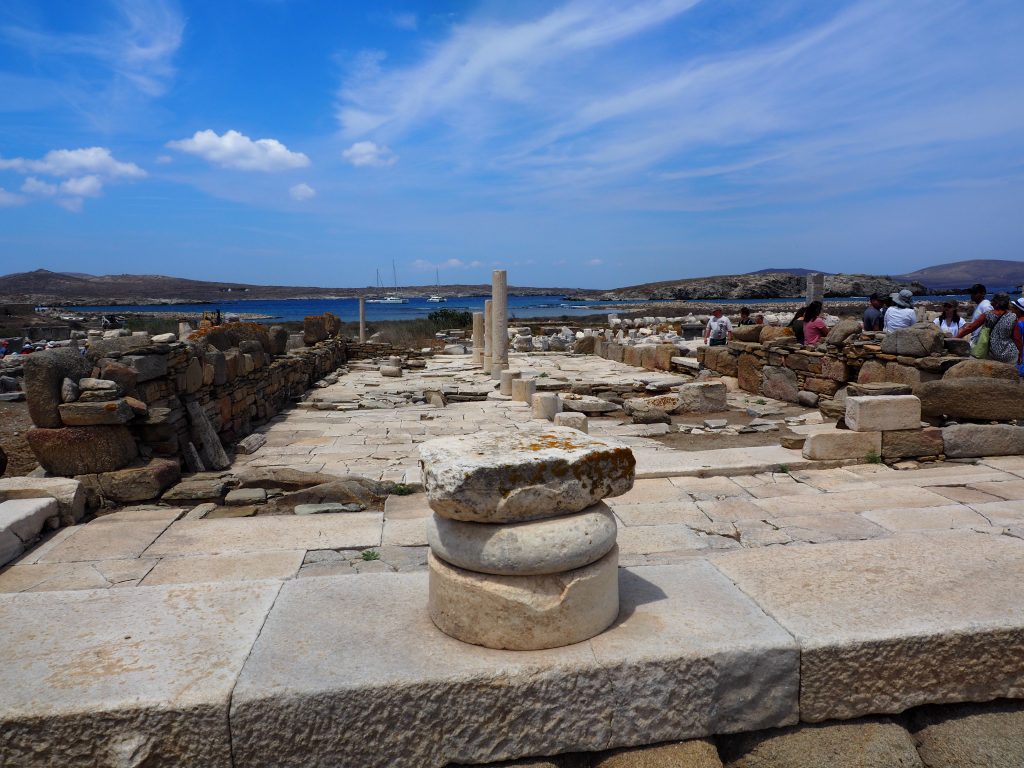

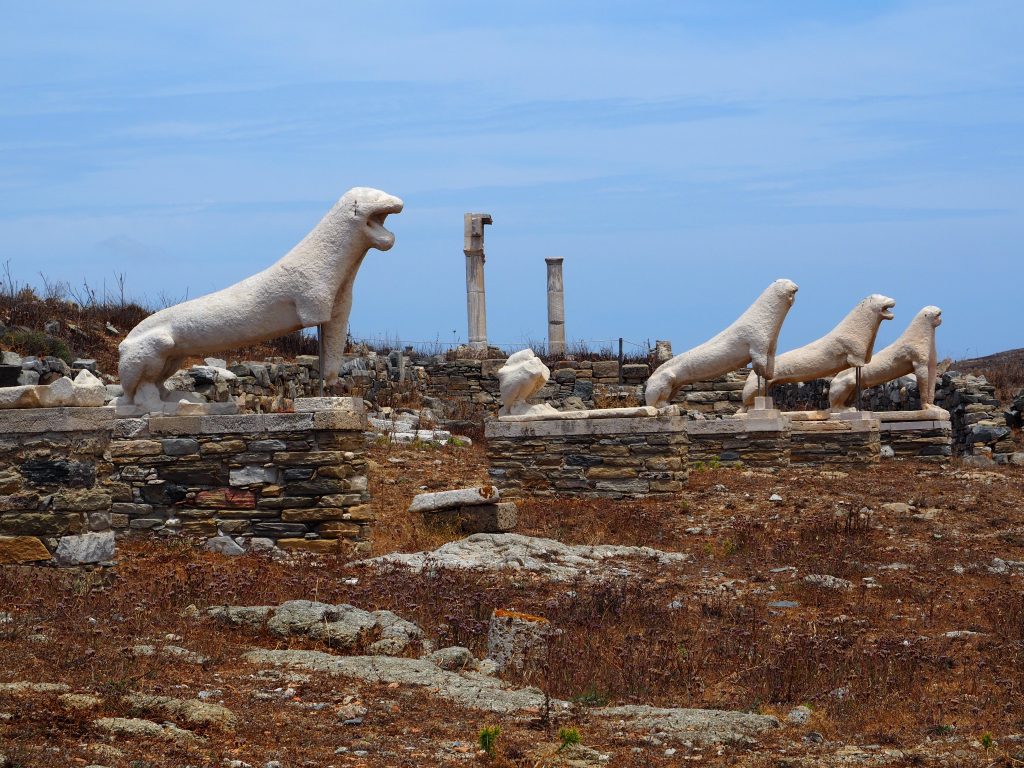
It is estimated that there were originally at least 9 Guardian Lions dedicated to the Sanctuary of Apollo, some put their number to as many as 16. Lions we can see today were found here between 1886 and 1906. Only 5 are complete and just fragments are preserved from 3 others. They are also called Naxian Lions because they were dedicated by the Naxians, i.e. the inhabitants of Naxos Island. They are even sculpted of Naxian marble. Their function was to guard a sacred lake, which does not exist any more.
One of the lions was taken to Venice, Italy in 17th century and is nowadays guarding the Porta Magna of the Venetian Arsenal.


